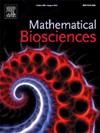社交媒体传染中的可持续性与社会细分:个体需求与同伴影响双重效应的数学与计算研究
IF 1.8
4区 数学
Q2 BIOLOGY
引用次数: 0
摘要
沉迷于基于网络的社交媒体已经日益成为一个严重的社会问题,尤其是在年轻人和青少年中。根据多项研究,过度使用社交媒体可能会对心理和身体产生有害影响。在这项研究中,我们将从数学上探索社交媒体成瘾行为的动态,并从个人需求或渴望和同伴相关因素或同伴压力的双重角度探索强迫性使用社交媒体的决定因素。对不考虑同伴压力效应的模型进行理论分析表明,当成瘾生成数小于1时,相关的无成瘾平衡是全局稳定的,当阈值大于1时,相关的无成瘾平衡是不稳定的。我们观察到同伴影响的引入如何增加了动态的可持续性,并导致了多重稳定性,通过这种稳定性,成瘾传染可以扩散,甚至低于指定的临界阈值。通过对模型网络的模拟,我们证明了我们的发现,即使存在社会异质性。最后,我们使用反应-扩散方法以二维晶格的形式研究合成社会中的时空动态。我们观察到社会聚类和分割的长期过渡,而不是快速收敛到稳定状态,其表现为时空格局的形成。我们的模型说明了同伴影响因素如何发挥关键作用,并得出结论,在制定更有效地对抗这种成瘾及其潜在不良后果的具体策略时,需要考虑同伴因素。本文章由计算机程序翻译,如有差异,请以英文原文为准。
Sustainability & social segmentation in social media contagion: A mathematical and computational study on dual effects of individual needs & peer influence
Addiction to internet-based social media has increasingly emerged as a critical social problem, especially among young adults and teenagers. Based on multiple research studies, excessive usage of social media may have detrimental psychological and physical impacts. In this study, we are going to explore mathematically the dynamics of social media addiction behavior and explore the determinants of compulsive use of social media from the dual perspectives of individual needs or cravings and peer-related factors or peer pressure. The theoretical analysis of the model without the peer pressure effect reveals that the associated addiction-free equilibrium is globally stable whenever a certain threshold, known as the addictive-generation number, is less than unity and unstable when the threshold is greater than unity. We observed how introduction of peer influence adds a sustainability to the dynamics, and causes a multistability, through which addiction-contagion can proliferate, even below the designated critical threshold. Using simulations over model networks, we demonstrate our finding, even in the presence of social heterogeneity. Finally, we use the reaction–diffusion approach to investigate spatio-temporal dynamics in a synthetic society, in the form of a 2D lattice. Instead of a fast convergence to the steady states, we observe a long transient of social clustering and segmentation, represented by spatio-temporal pattern formation. Our model illustrates how the peer influence factor plays a crucial role and concludes that it is required to consider the peer factors while formulating specific strategies that could be more effective against this addiction and its potential adverse outcomes.
求助全文
通过发布文献求助,成功后即可免费获取论文全文。
去求助
来源期刊

Mathematical Biosciences
生物-生物学
CiteScore
7.50
自引率
2.30%
发文量
67
审稿时长
18 days
期刊介绍:
Mathematical Biosciences publishes work providing new concepts or new understanding of biological systems using mathematical models, or methodological articles likely to find application to multiple biological systems. Papers are expected to present a major research finding of broad significance for the biological sciences, or mathematical biology. Mathematical Biosciences welcomes original research articles, letters, reviews and perspectives.
 求助内容:
求助内容: 应助结果提醒方式:
应助结果提醒方式:


